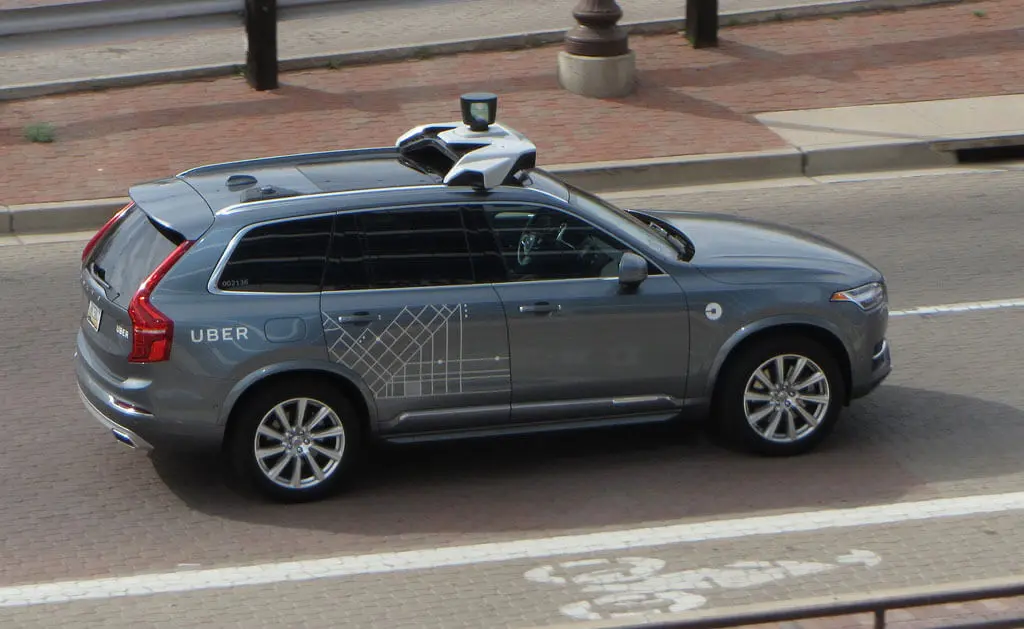Do you feel safe with the idea of self-driving cars? More-importantly, would you ride in one yourself?
 “Uber testing self-driving car” (CC 2.0) by Zombieite
“Uber testing self-driving car” (CC 2.0) by Zombieite
Self-driving vehicles are no longer science fiction. Not only has Uber has announced plans for fully-autonomous rideshare vehicles, Texas is laying the groundwork toward allowing self-driving vehicles for commercial use.
While Uber, Google, and GM are just a few of the companies working on self-driving technology, Uber recently made headlines by announcing their own self-driving vehicle. “Take a ride that you’ve never experienced,” says Uber senior technical program manager Deanem Kowoliski.
With its 360-degree laser cylinder, which allows the vehicle to conduct a 360-degree sweep of the surrounding area, Uber’s self-driving vehicles are able to keep track of things like other cars, trucks, lane markers, crosswalks, traffic lights, signs, sidewalks, bicycles and pedestrians. Currently, each self-driving vehicle is monitored by a vehicle operator who, at any point, can reclaim control of the vehicle.
The goal, of course, is to make transportation safer by eliminating the biggest variable; the driver. Ninety-four percent of all car accidents are caused by human error, according to Washington Governor Jay Inslee. The idea is that more self-driving vehicles could reduce the number of drunk, distracted, or otherwise unsafe drivers. Uber has already taken over 50,000 trips (traveling almost 2 million miles) while testing their self-driving vehicle in order to ensure the technology is not only accurate, but safe.
Texas lawmakers recently passed a statewide law (SB 2205) laying the groundwork toward allowing—and regulating—self-driving vehicles in our state for commercial use. The question is: are you comfortable with the idea of fully-autonomous vehicles sharing the road with you? More-importantly, would you really trust a driverless Uber to safely transport you or your loved ones through the traffic, construction zones, and driving hazards we deal with on a daily basis in Texas?
The Potential Dangers, Safeguards & Regulations
Just tonight, a self-driving Uber Volvo XC90 struck and killed a 49-year-old woman in Arizona; the first pedestrian death associated with self-driving technology. This vehicle did have an operator in the driver’s seat, but was in autonomous mode at the time of the collision.
A preliminary investigation showed the vehicle was moving at around 40 mph when it struck the victim, who was walking with her bicycle on the street. Police said it did not appear that the car had slowed down before impact. Uber has since announced that it has temporarily suspended autonomous vehicle testing while it works to learn more.
Even with the legislative support, extensive testing, and supporting evidence, many people are still hesitant to take their chances inside an autonomous vehicle. According to a survey conducted by AAA, over sixty-three percent of participants were afraid to ride in self-driving vehicles with no backup operator present.
Under most mandates, each self-driving vehicle must have a specific amount of insurance, and must video record all trips. In addition, the manufacturer “must accept liability for all accidents on the road” (a stipulation that Uber has already fought against in other states). Currently, all self-driving vehicles must also have a vehicle operator in the driver’s seat to monitor the trip and to reclaim control if need be, but even that isn’t always effective. There have been several reports (and videos) of Tesla drivers distracted behind the wheel—one even sleeping—while the vehicle was in operation on a public roadway.
The Issue of Liability
There is no established legal precedent concerning liability when it comes to an accident caused by a self-driving vehicle; or essentially, a computer. The issue becomes even more complex when a personal injury or wrongful death occurs. Who’s criminally responsible? Who’s civilly liable for the victim’s medical bills, lost wages, or pain and suffering? How many parties might need to be included in the chain of liability?
Self-driving vehicles, no matter how safe the technology is, cannot eliminate all causes of motor vehicle collisions. We hope to see this technology put a dent in the number of fatal car crashes caused by negligent drivers, but before society will fully-accept driverless vehicles, a deep analysis into the legal implications will need to be thoroughly undertaken.

Montgomery Law is a Dallas-based personal injury law firm focused on getting clients the justice and compensation they deserve.
Call us toll-free at 1-833-720-6090 to discuss your case today for no cost.


Leave A Comment